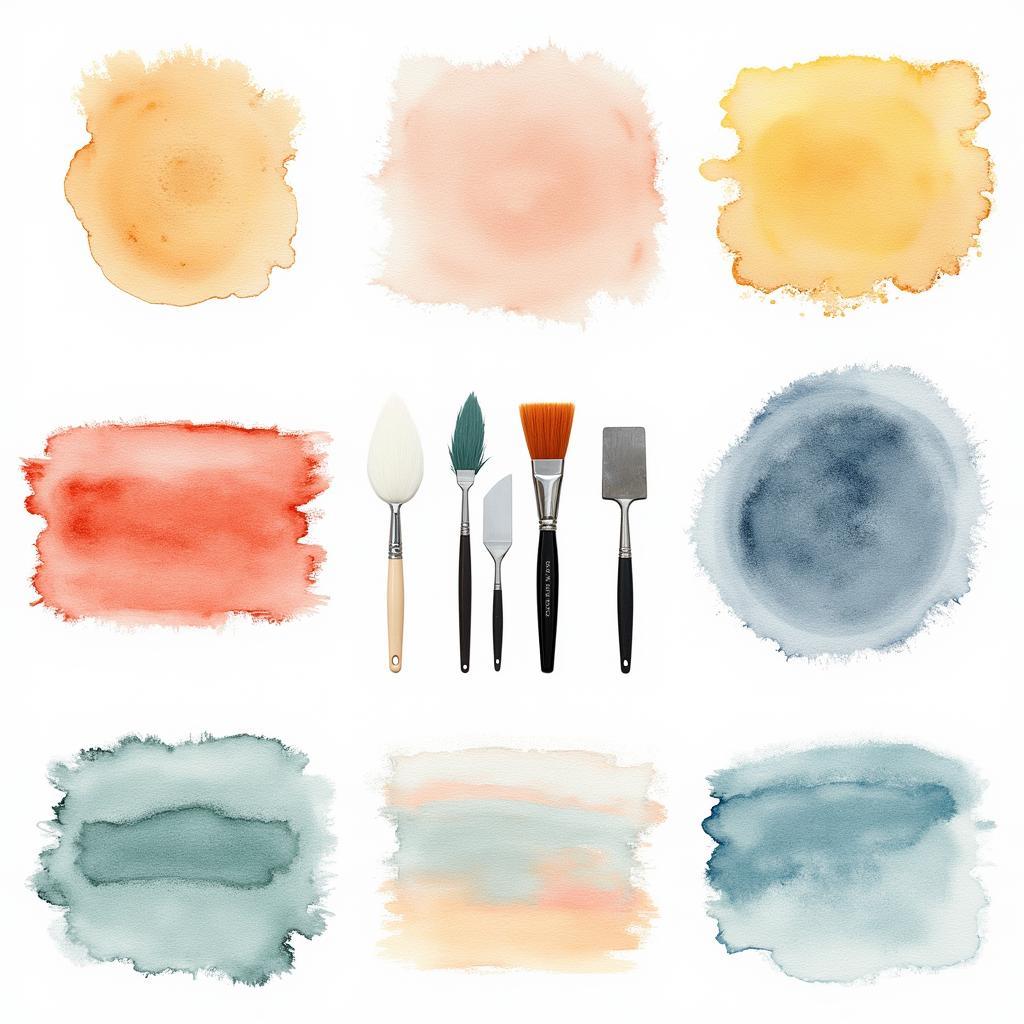Capturing the Light: Exploring Mediterranean Landscape Art
Mediterranean Landscape Art has captivated artists and art lovers for centuries. From the vibrant hues of the Greek Isles to the sun-drenched coasts of Italy, this genre captures the unique beauty and atmosphere of the Mediterranean region. This article delves into the history, techniques, and enduring allure of Mediterranean landscape art, offering inspiration and insights for both aspiring artists and seasoned collectors.
A Journey Through History: The Evolution of Mediterranean Landscape Art
The depiction of Mediterranean landscapes in art has a rich history, dating back to ancient civilizations. Minoan frescoes often featured stylized landscapes, showcasing the natural beauty of their island home. Later, Roman artists embraced landscape painting as a decorative element in villas and public spaces, capturing the idyllic scenery of the Italian countryside. The Renaissance witnessed a resurgence of interest in classical ideals, and artists like Leonardo da Vinci incorporated detailed landscapes into their works, often as backdrops for religious or mythological scenes. You might enjoy books about Etel Adnan, a Lebanese-American artist, whose evocative landscapes capture the spirit of the Mediterranean. See some etel adnan art books.
The Influence of Impressionism and Beyond
The 19th century saw the rise of Impressionism, which revolutionized the way artists approached landscape painting. Artists like Claude Monet and Pierre-Auguste Renoir sought to capture the fleeting effects of light and color, often painting en plein air, or outdoors, to directly observe the changing moods of nature. The Mediterranean, with its brilliant sunlight and vibrant colors, provided the perfect subject matter for these artists. Post-Impressionists like Paul Cézanne and Vincent van Gogh continued to explore the expressive potential of landscape, using bold colors and stylized forms to convey their emotional responses to the Mediterranean environment.
Essential Elements of Mediterranean Landscape Art
What makes a Mediterranean landscape instantly recognizable? Several key elements contribute to the distinct aesthetic of this genre. These include the characteristic architecture, the interplay of light and shadow, and the vibrant color palette.
- Architecture: Whitewashed buildings with terracotta roofs, ancient ruins, and charming villages nestled among hillsides are common motifs in Mediterranean landscape art.
- Light and Shadow: The intense sunlight of the Mediterranean creates dramatic contrasts between light and shadow, adding depth and dimension to the landscapes.
- Color Palette: The colors of the Mediterranean are rich and varied, ranging from the deep blues of the sea and sky to the warm ochers and terracotta tones of the earth and buildings. The lush greens of olive groves and vineyards also play a prominent role.
Capturing the Mediterranean Light: Tips for Artists
For artists seeking to capture the essence of the Mediterranean landscape, understanding how to depict light is crucial. Here are a few tips:
- Observe the Light: Spend time observing the way light falls on different surfaces at various times of day. Note the subtle shifts in color and intensity.
- Use Color Temperature: Warm colors like yellows and oranges suggest sunlight, while cooler blues and violets can be used for shadows and areas in shade.
- Embrace Contrast: Don’t be afraid to use strong contrasts between light and dark to create a sense of drama and depth.
- Experiment with Texture: Use brushstrokes and layering techniques to create texture and suggest the roughness of stone or the smoothness of water. Santorini wall art is a perfect example of capturing this unique beauty.
“The Mediterranean light is unlike anything else in the world. It’s a magical quality that transforms everything it touches.” – Maria Rossi, renowned landscape artist
Modern Interpretations of Mediterranean Landscape Art
While traditional representations of Mediterranean landscapes continue to be popular, contemporary artists are also exploring new and innovative approaches to this genre. Some artists are incorporating abstract elements, while others are experimenting with different media, such as photography and digital art. The use of vibrant colors and bold compositions remains a constant, reflecting the enduring allure of the Mediterranean landscape. Discover beautiful art prints of italy that encapsulate the essence of the region.
Conclusion: The Enduring Appeal of Mediterranean Landscape Art
Mediterranean landscape art offers a captivating glimpse into a world of beauty, history, and culture. Whether you are drawn to the traditional depictions of rolling hills and picturesque villages or prefer more modern interpretations, this genre continues to inspire and delight. For a unique touch, consider capri wall art to bring a Mediterranean feel to your home. By understanding the key elements and techniques used by artists, we can gain a deeper appreciation for the enduring appeal of Mediterranean landscape art. cypress tree art are frequently found in Mediterranean landscapes and also available as stunning wall art.
FAQ
- What are the key characteristics of Mediterranean landscape art?
- Which famous artists are known for their Mediterranean landscapes?
- How can I learn to paint Mediterranean landscapes?
- Where can I find examples of Mediterranean landscape art?
- What are some popular subjects in Mediterranean landscape art?
- What are the different styles of Mediterranean landscape art?
- How can I incorporate Mediterranean landscape art into my home decor?
When you need assistance, please contact Phone Number: 02462573573, Email: danteum@gmail.com Or visit us at: Savico Megamall, 7-9 Đ. Nguyễn Văn Linh, Gia Thụy, Long Biên, Hà Nội 10000, Việt Nam. We have a 24/7 customer service team.




